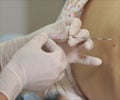Researchers at Penn Medicine have identified five most common perioperative procedures that can be avoided by doctors and help them make cost-effective treatment decisions.

The "Choosing Wisely" campaign is an ongoing effort by the American Board of Internal Medicine Foundation to help physicians become better stewards of health care resources. The Physician's Charter, a similar initiative, was issued in 2002 and outlined the physician's responsibilities to ensure access to high quality care by practicing evidence-based medicine, cost-effectively, and maintaining trust by minimizing conflicts of interest. This initiative was adopted by the ASA and more than 130 other organizations.
"The elimination of low-value services in low-risk patients represents a substantial savings, but we needed some consensus from our peers as to what the top least-valued services and procedures were," said the study's lead author, Onyi C. Onuoha, MD, MPH, assistant professor of Anesthesiology and Critical Care.
The researchers surveyed their peers on 18 items. First, practicing academic anesthesiologists affiliated with the Society of Academic Anesthesiology Associations responded, narrowing the list to 11 items. The list was then disseminated to the Association of University Anesthesiologists and to a subset of ASA members.
Respondents were overwhelmingly male, from academic practice settings, in practice for more than 20 years and working with the leadership of the ASA.
Survey respondents were asked to report their feedback on each clinical item across five domains, including frequency in practice, impact on quality of care, impact on cost of care, evidence supporting the activity, and the ease in implementation of avoidance.
The resulting top five activities the authors recommend questioning included:
Advertisement
-Baseline cardiac testing or cardiac stress test in asymptomatic stable patients with known cardiac disease undergoing low-risk or moderate-risk noncardiac surgery
-Routine use of PAC (pulmonary artery catheter) for cardiac surgery in patients with a low risk of blood pressure complications, especially if other diagnostic tools like an echocardiogram are being used during the procedure
-Administration of blood in young healthy patients without ongoing blood loss and with a low-normal hemoglobin concentration, unless they show symptoms or blood pressure problems
-Routine administration of specific types of intravenous fluids for replacement of blood or other fluids without appropriate indications.
These recommendations were then submitted to the Choosing Wisely campaign.
Advertisement
Penn Medicine is one of the world's leading academic medical centers, dedicated to the related missions of medical education, biomedical research, and excellence in patient care. Penn Medicine consists of the Raymond and Ruth Perelman School of Medicine at the University of Pennsylvania (founded in 1765 as the nation's first medical school) and the University of Pennsylvania Health System, which together form a $4.3 billion enterprise.
The Perelman School of Medicine has been ranked among the top five medical schools in the United States for the past 17 years, according to U.S. News & World Report's survey of research-oriented medical schools. The School is consistently among the nation's top recipients of funding from the National Institutes of Health, with $392 million awarded in the 2013 fiscal year.
The University of Pennsylvania Health System's patient care facilities include: The Hospital of the University of Pennsylvania -- recognized as one of the nation''s top "Honor Roll" hospitals by U.S. News & World Report; Penn Presbyterian Medical Center; Chester County Hospital; Penn Wissahickon Hospice; and Pennsylvania Hospital -- the nation's first hospital, founded in 1751. Additional affiliated inpatient care facilities and services throughout the Philadelphia region include Chestnut Hill Hospital and Good Shepherd Penn Partners, a partnership between Good Shepherd Rehabilitation Network and Penn Medicine.
Penn Medicine is committed to improving lives and health through a variety of community-based programs and activities. In fiscal year 2013, Penn Medicine provided $814 million to benefit our community.
Source-Newswise










